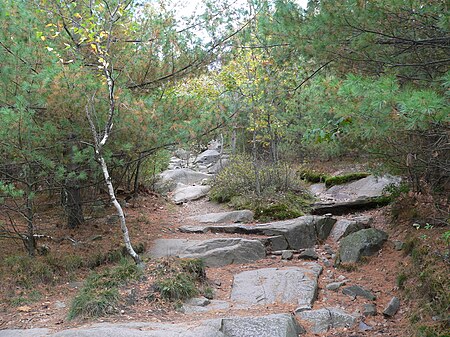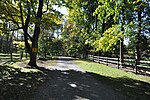Blue Hills Reservation
1893 establishments in MassachusettsGeography of Braintree, MassachusettsHills of MassachusettsLandforms of Norfolk County, MassachusettsMassachusetts Audubon Society ... and 9 more
Massachusetts natural resourcesMuseums in Norfolk County, MassachusettsNatural history museums in MassachusettsNature centers in MassachusettsParks in Norfolk County, MassachusettsProtected areas established in 1893Religious places of the indigenous peoples of North AmericaState parks of MassachusettsUse mdy dates from August 2023

Blue Hills Reservation is a 7,000-acre (2,800 ha) state park in Norfolk County, Massachusetts in the United States. Managed by the Massachusetts Department of Conservation and Recreation, it covers parts of Milton, Quincy, Braintree, Canton, Randolph, and Dedham. Located approximately ten miles south of downtown Boston, the reservation is one of the largest parcels of undeveloped conservation land within the Greater Boston metropolitan area. The park's varied terrain and scenic views make it a popular destination for hikers from the Boston area.
Excerpt from the Wikipedia article Blue Hills Reservation (License: CC BY-SA 3.0, Authors, Images).Blue Hills Reservation
Green Street,
Geographical coordinates (GPS) Address Nearby Places Show on map
Geographical coordinates (GPS)
| Latitude | Longitude |
|---|---|
| N 42.211111111111 ° | E -71.127777777778 ° |
Address
Green Street
Green Street
02187
Massachusetts, United States
Open on Google Maps










